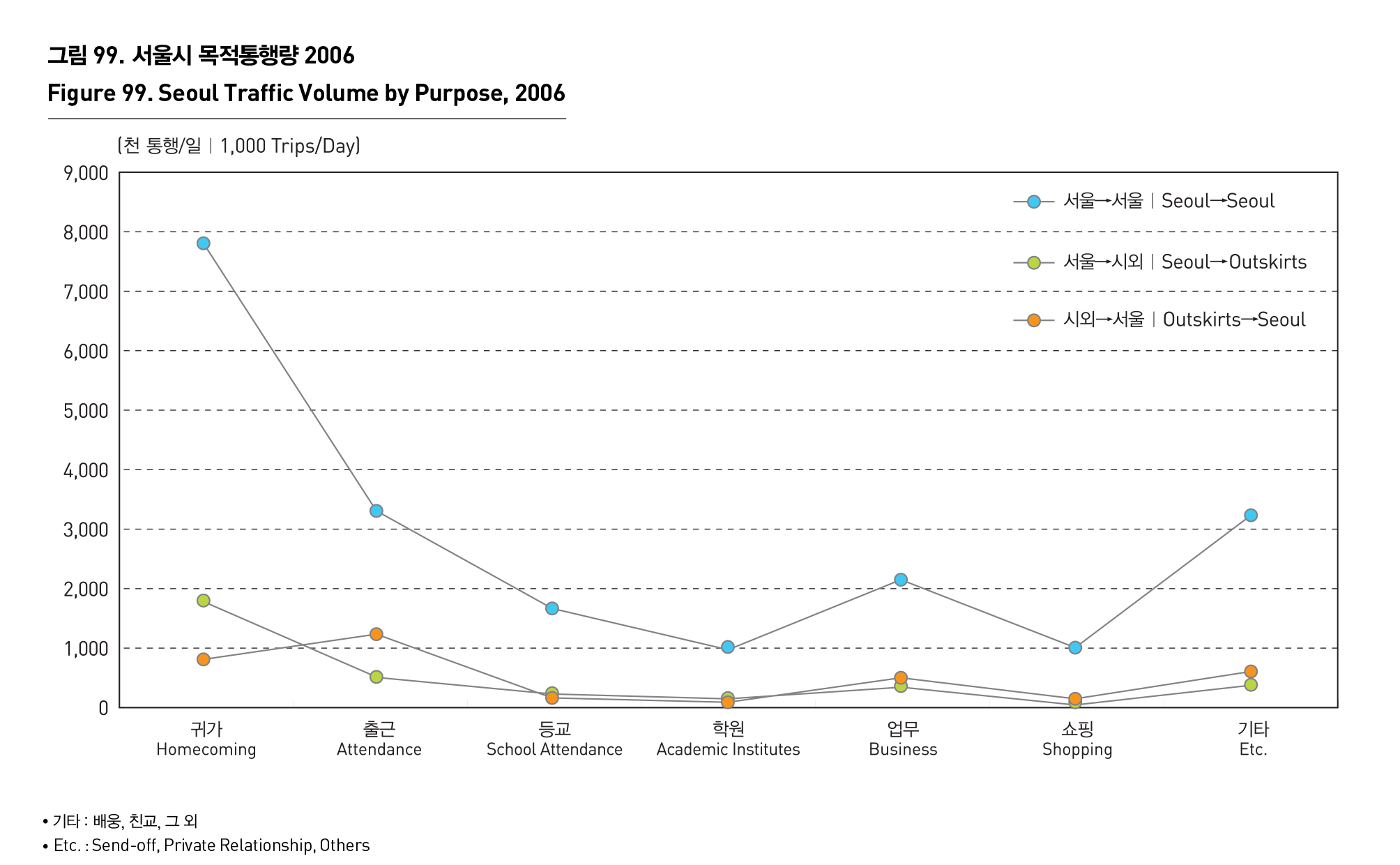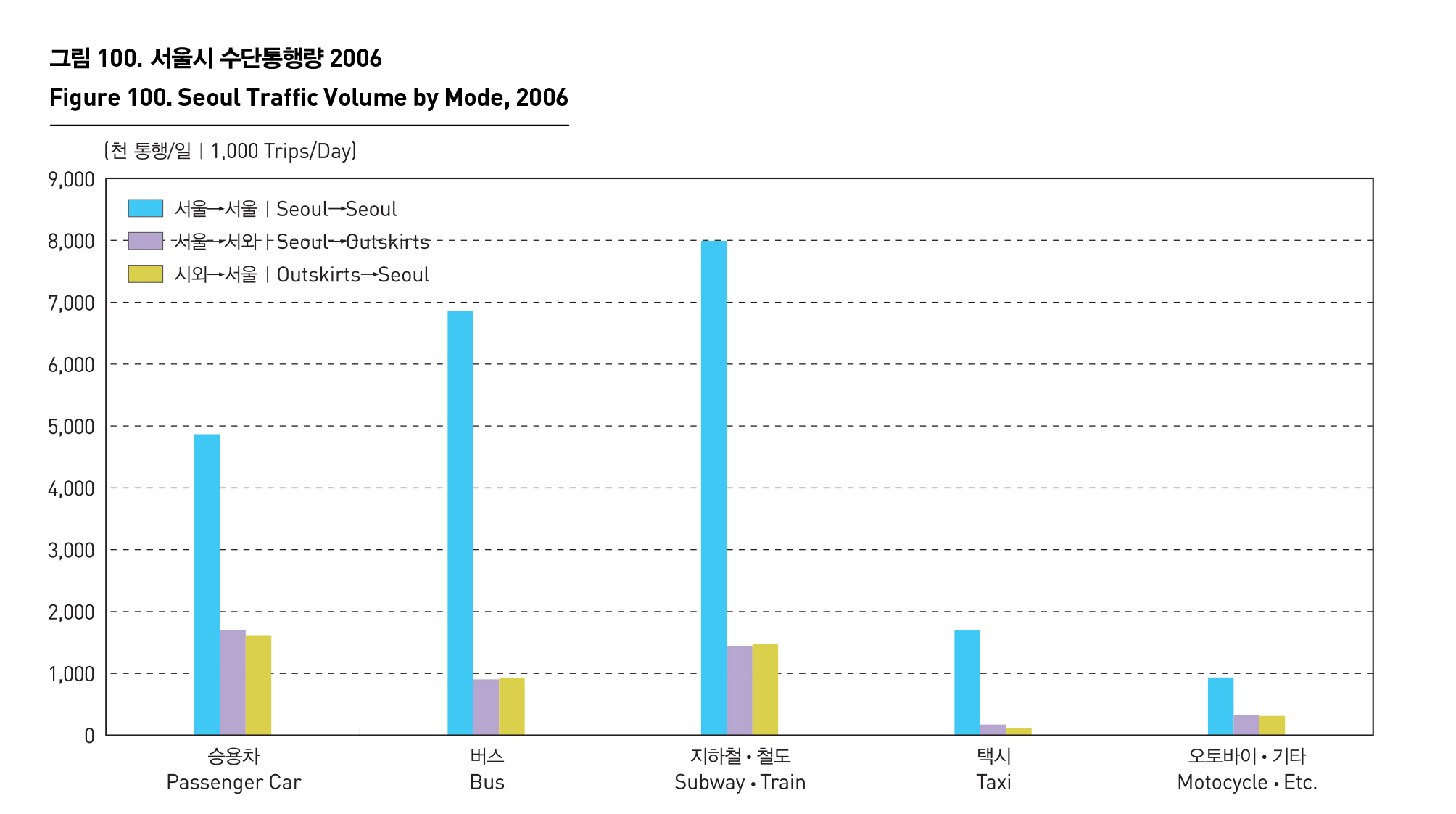-
교통
통행
-
통행
2006년 서울시 목적통행을 분석하면, 우선 서울시 내부통행은 귀가, 출근, 기타, 업무, 등교, 쇼핑, 학원통행 순으로 분포되어 있어 통행의 유입과 유출이 균형을 이루고 있다. 서울->시외 통행은 서울시 내부통행과 유사한 형태를 보이고 있는 반면, 시외->서울 통행은 출근통행이 귀가통행을 상회하여 시외 지역이 서울시를 중심으로 주거지 역할의 기능을 수행하는 현상을 설명한다.
2006년 수단통행으로서 서울시 통행은 철도와 버스를 포함하는 대중교통이 주요통행수단이다. 반면 서울과 시외지역의 장거리통행에 대해서는 승용차가 대중교통보다 많이 이용되어 서울시와 시외지역을 연결하는 대중교통 육성정책이 필요한 것으로 파악된다.
서울의 통행패턴은 강남으로의 이동이 도심을 앞지른 것으로 파악되었고, 그 외에 여의도를 중심으로 하는 영등포구로의 이동이 집중되는 현상을 보이고 있다. 관악구, 송파구, 동작구에서 강남으로의 통행이동이 활발하며, 서초구는 새로운 통행유입지역으로 발전하는 등 강남지역 중심의 통행패턴으로 발전하고 있다.
TRIP
Trip to Seoul by purpose in 2006 shows outgoing trips from Seoul and incoming trips to Seoul are in balance. The biggest cause of trips in Seoul is homecoming, followed by commuting, other purpose, business, attending school, shopping, and going to institutes. The trips from Seoul to outskirts show a pattern similar to trips in Seoul. But when it comes to trips from outskirts to Seoul, there are more commuting trips than homecoming trips, which shows that outskirts perform a residential function.
Trip to Seoul by mode in 2006 indicates that public transportation system including railroads and buses are widely used. But passenger cares are used more than public transportation mode for trips between Seoul and outskirts, so there should be policy to develop public transportation system linking Seoul and outskirts. When it comes to trip pattern in Seoul, there are more trips to Gangnam than to the downtown, and many people make trips to Yeongdeungpo-gu, in particular Yeouido. There are also many trips from Gwanak-gu, Songpa-gu and Dongjak-gu to Gangnam, and some trips have begun to flow into Seocho-gu, which shows a trip pattern focused on the south of Hangang.
출처 : 서울시정개발연구원 내부자료
수도권교통본부, 2006 수도권가구통행실태조사, 2007



